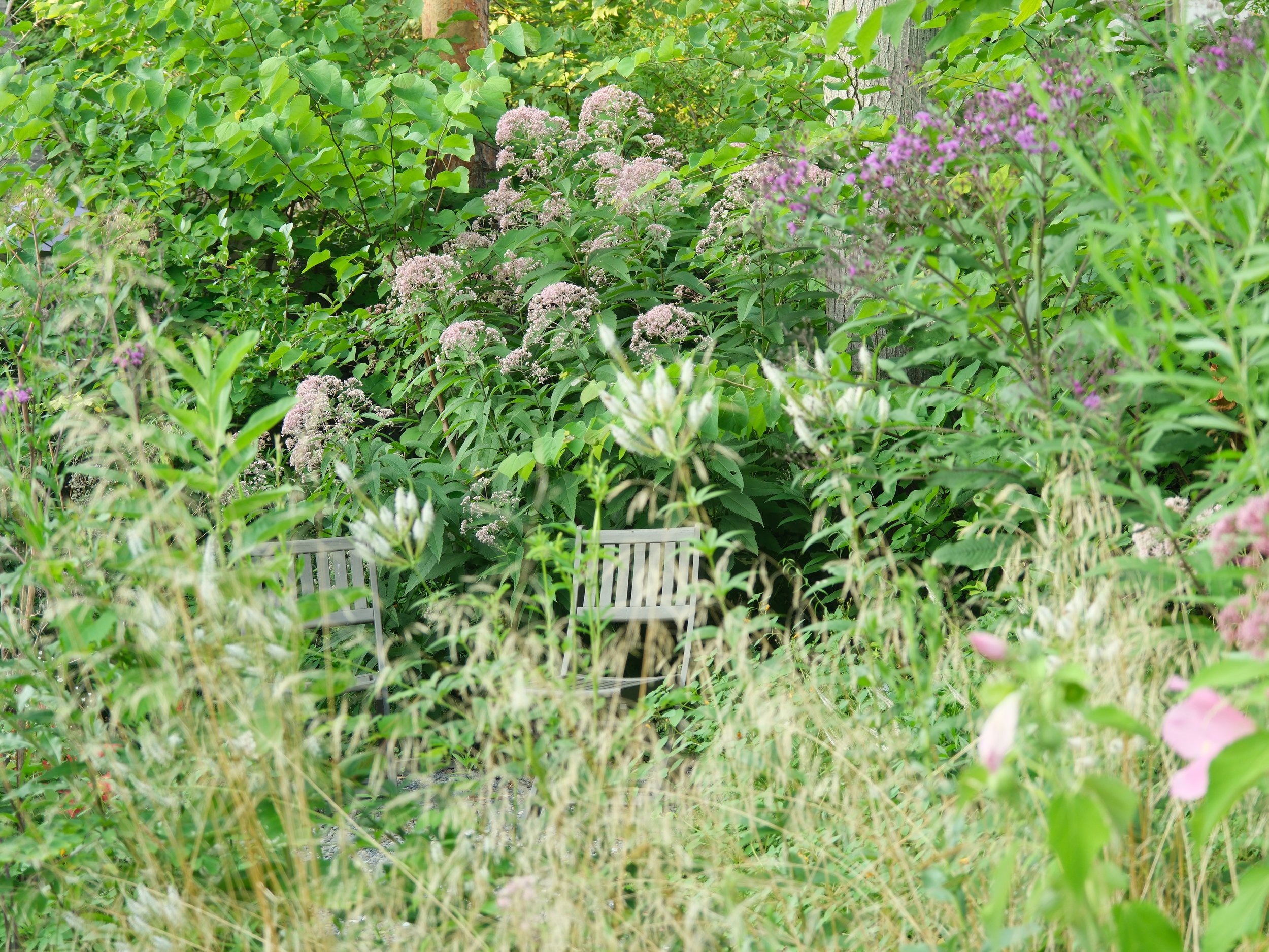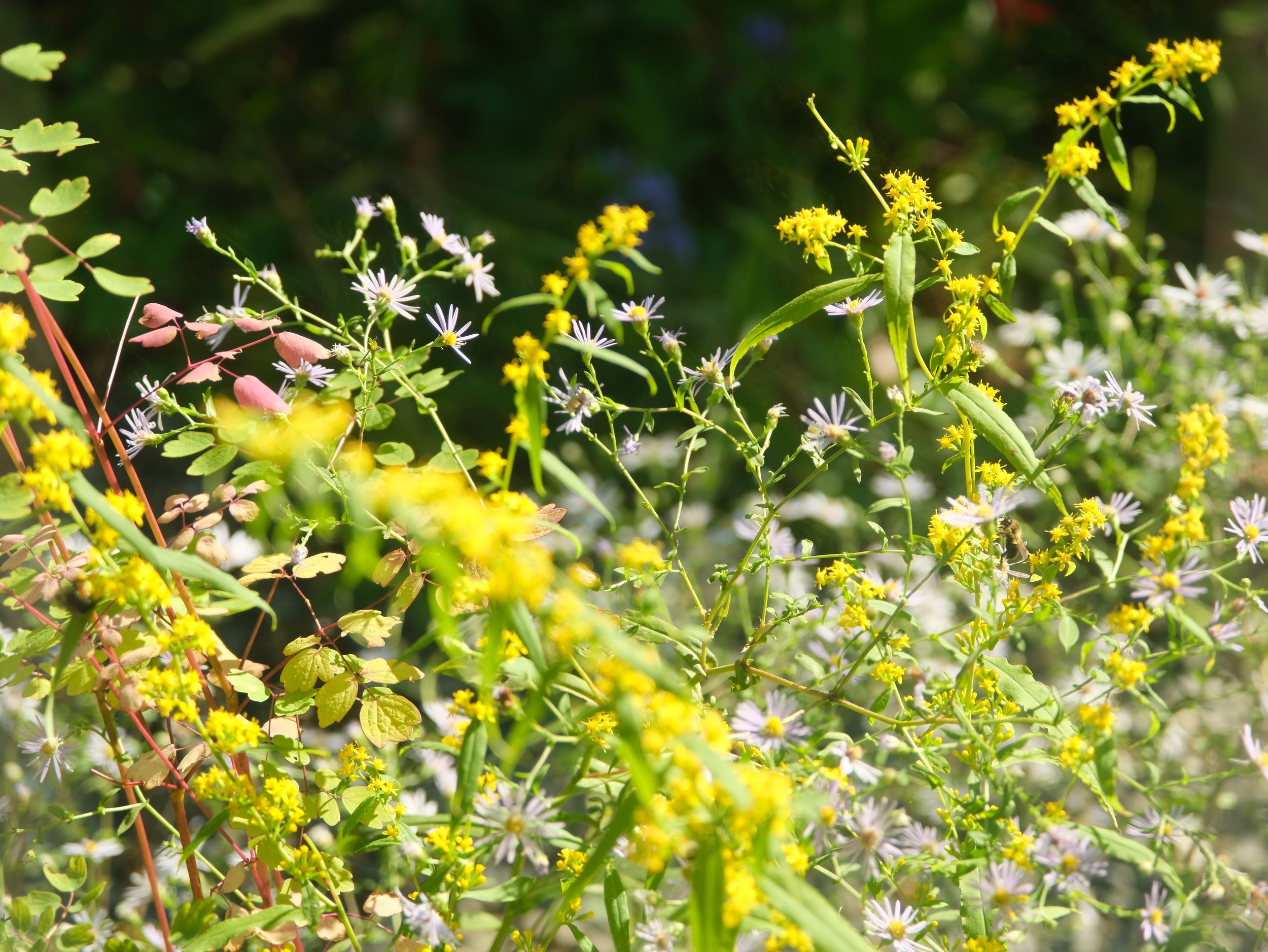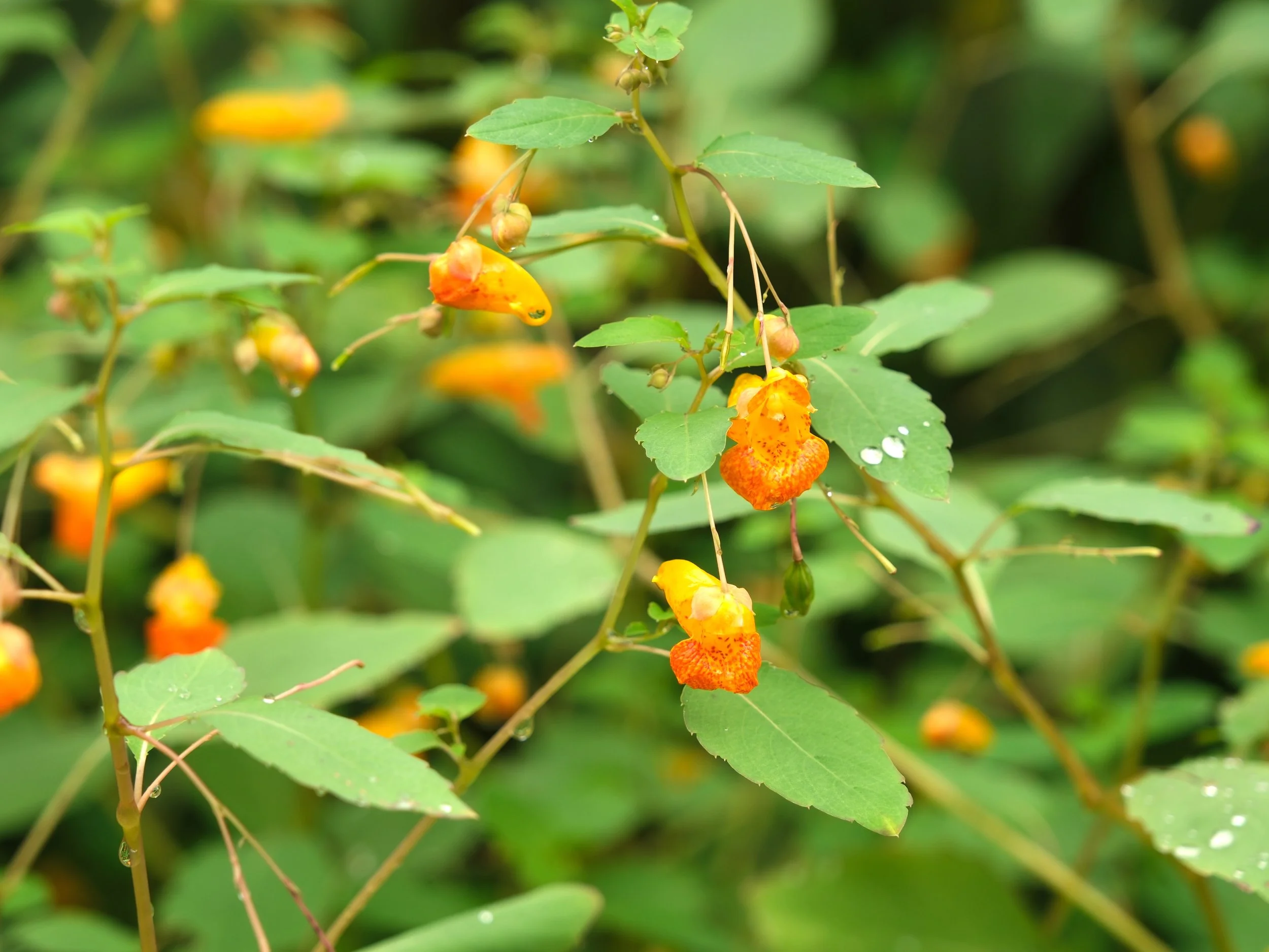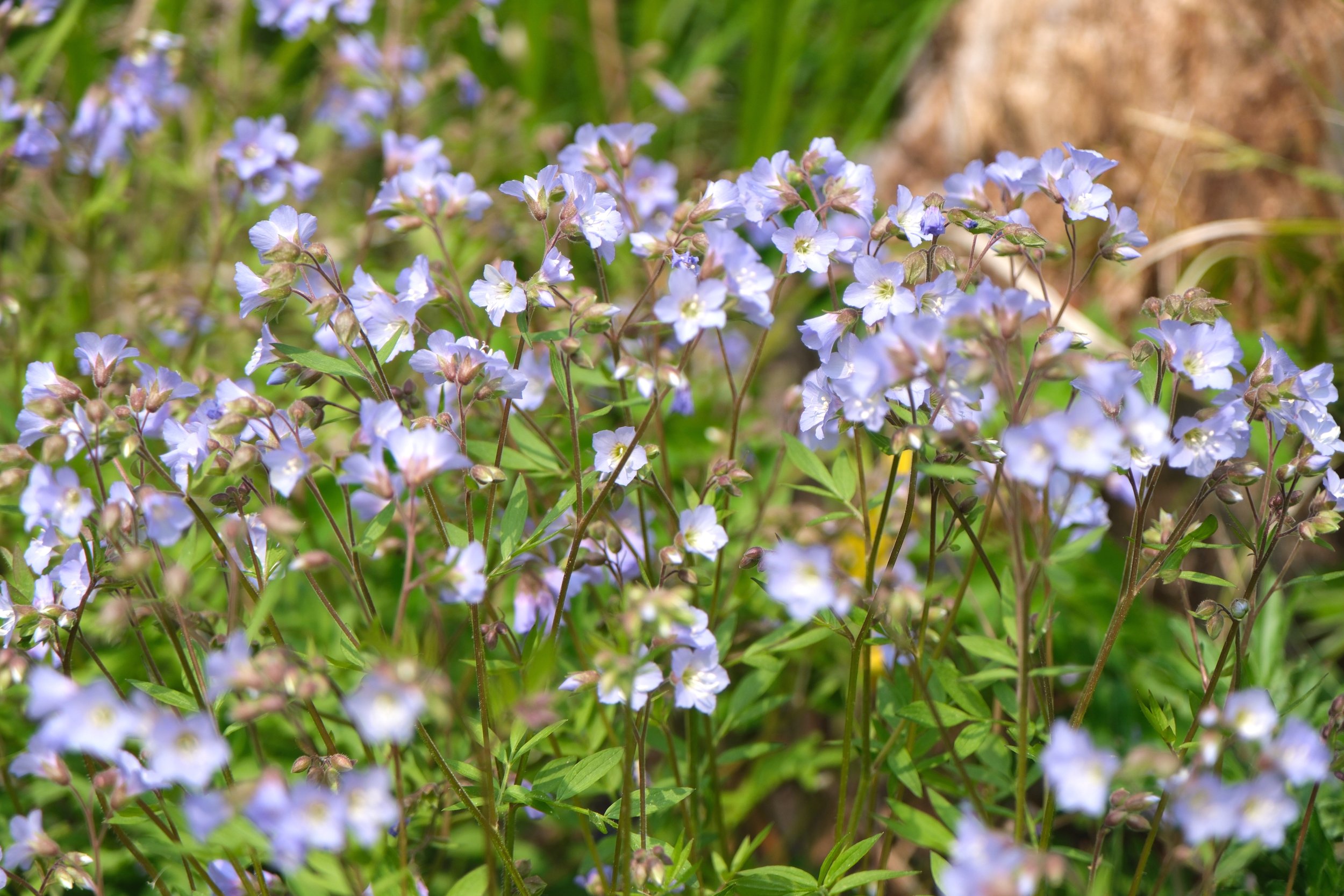Snag Garden
A large honey locust (Gleditsia triacanthos) crashed to the ground during a windstorm, taking another tree with it. In an instant, this woodland garden turned sunny.
Our response has been to slowly and iteratively investigate which plants enjoy this newly ruptured forest edge. Each year we’re making edits and additions, crafting a community of plants that can adapt to the present conditions of the garden and have the ability to adapt as the surrounding trees gradually cast more shade. And we left a 12’ snag. Pileated woodpeckers frequent it. There has been a significant increase in visitation by warblers during fall migration.
The project has helped us to better understand how long-term collaboration with a client can lead to an ecologically-robust garden, even within the constraints of a limited budget. Time, natural processes, spontaneous plants—all have been design gestures and cost saving strategies.
Patience has been essential. We’ve slowed down and worked with the site, thinking about how it changes over seasons and years. We think about not only the current state of the site but also where it’s headed and how we might intervene.
There’s a balance here between wildness and intention, between the ephemeral and the permanent, that’s always being negotiated.
Within the corner of the garden, where the honey locust fell, we’ve carved out a seating nook from which the plants and processes of the garden can be enjoyed.
The snag soon after the windstorm
Pileated woodpeckers










